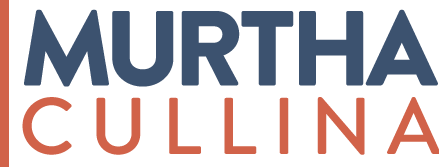October 9, 2023
By: Melanie N. Aska
Many employees who have had to resume repaying their federal student loans this month may find it harder to continue contributing to their employers’ retirement plans. For some employees, there simply is no room in the family budget to repay student loans and save for retirement at the same time.
Student loan debtors who have had to reduce or stop their own retirement plan contributions to make room in their family budgets for student loan repayments may also be missing out on employer matching contributions made on account of employee contributions.
SECURE 2.0: Employer Matching Contributions on Employees’ QSLPs
Beginning in 2024, employers who wish to do so can add a matching contribution feature to their retirement plans under which they would make matching contributions into their plans on account of “qualified student loan payments” (QSLPs) their employees make outside those plans.
A provision in the SECURE 2.0 Act of 2022 (SECURE 2.0) permits (but does not require) employers to make matching contributions on account of employees’ QSLPs for plan years beginning after December 31, 2023. Employers that add this new matching contribution feature to their retirement plans can help enhance retirement readiness for employees who are making QSLPs and who have had to reduce or stop making matchable elective deferrals to those plans.
“Matching Contributions” Redefined. SECURE 2.0 redefined “matching contributions” to include employer contributions made to a 401(k) plan, 403(b) plan, 457(b) governmental plan or 408(p) SIMPLE IRA plan on account of employees’ QSLPs, provided certain conditions are met.
Qualified Student Loan Payments. To be treated as a matching contribution to an eligible retirement plan, an employer contribution must be made on account of a “qualified student loan payment” (QSLP). In general, a QSLP is a payment an employee makes to repay a “qualified education loan” (as defined in IRC Section 221(d)(1)) the employee incurred to pay “qualified higher education expenses.”
The aggregate amount of matchable QSLPs an employee may make for any plan year beginning after December 31, 2023 may not exceed an amount equal to:
- The lesser of the IRC Section 402(g) elective deferral limit for that year or the employee’s IRC Section 415(c)(3) compensation for the year; minus
- The IRC Section 402(g) elective deferrals the employee made to his or her employer’s retirement plan for that year.
Example. Acme Blasting Caps, Inc.’s workforce includes a significant number of employees repaying student loans. Acme amended its 401(k) plan effective for calendar plan years beginning on or after January 1, 2024 to include employer matching contributions on QSLPs. Wiley, a plan participant, elected to make elective deferrals into the plan equal to 80% of the IRC Section 402(g) elective deferral limit for 2024. By the applicable deadline after the close of the 2024 plan year, Wiley certifies to Acme that he made student loan payments during 2024 equal to 40% of the IRC Section 402(g) limit for 2024. Since the sum of Wiley’s elective deferrals made to the 401(k) plan plus his student loan payments made outside the plan exceed the IRC Section 402(g) limit for 2024 (i.e., 80% + 40% = 120%), the amount of Wiley’s student loan payments that Acme can treat as QSLPs for employer matching contribution purposes under the 401(k) plan is limited to 20% of the IRC Section 402(g) limit for 2024. If we assume that the IRC Section 402(g) elective deferral limit will be $23,000 for 2024, then Wiley’s elective deferrals made into the 401(k) plan would equal $18,400 (i.e., 80% x $23,000), and his matchable QSLPs would equal $4,600 (i.e., 20% x $23,000).
“Qualified Education Loan” and “Qualified Higher Education Expenses.” As noted above, a QSLP is a payment an employee makes to repay a “qualified education loan” (as defined in IRC Section 221(d)(1)) the employee incurred to pay “qualified higher education expenses.”
- “Qualified Education Loan.” For these purposes, the term “qualified education loan” has the same meaning as for purposes of the federal income tax deduction under IRC Section 221 for interest on education loans. “Qualified education loan” means any indebtedness incurred by the taxpayer solely to pay “qualified higher education expenses” which are:
- Incurred on behalf of the taxpayer, the taxpayer’s spouse, or any dependent (as defined in IRC Section 152, determined without regard to IRC Sections 152(b)(1), (b)(2) and (d)(1)(B)) of the taxpayer as of the time the indebtedness was incurred;
- Paid or incurred within a reasonable period of time before or after the indebtedness is incurred; and
- Attributable to education furnished during a period during which the recipient was an “eligible student” (as defined in IRC Section 25A(b)(3)). In general, an “eligible student” is a student who is carrying at least one-half the normal full-time workload for the course of study the student is pursuing, and who is enrolled or accepted for enrollment in a degree, certificate or other program leading to a recognized educational credential at an eligible institution of higher education.
The term “qualified education loan” includes indebtedness used to refinance indebtedness which qualifies as a “qualified education loan.”
- “Qualified Higher Education Expenses.” For these purposes, the term “qualified higher education expenses” generally means the cost of attendance (for example, tuition, fees, and room and board expenses) at an eligible educational institution.
Annual Certification Requirement. An employee who makes QSLPs must certify annually to the employer making the matching contributions that the employee has made QSLPs on a qualified education loan. The deadline for the employee to submit the annual certification cannot be earlier than three months after the close of the plan year for which the matching contributions are made. The employer may rely upon the employee’s annual certification absent actual knowledge to the contrary.
Plan Design Requirements for Matching Contributions on QSLPs. A retirement plan must satisfy certain plan design requirements for employer contributions on QSLPs to be treated as matching contributions:
- First, the plan must provide matching contributions on account of elective deferrals at the same rate as contributions on account of QSLPs;
- Second, the plan must provide matching contributions on account of QSLPs only on behalf of employees who are otherwise eligible to receive matching contributions on account of elective deferrals;
- Third, under the plan, all employees who are eligible to receive matching contributions on account of elective deferrals must be eligible to receive matching contributions on account of QSLPs; and
- Finally, the plan must provide that matching contributions on account of QSLPs must vest in the same manner as matching contributions on account of elective deferrals.
Compliance Testing. As noted above, QSLPs count against an employee’s IRC Section 402(g) limit on elective deferrals for the year. But, QSLPs do not count toward the IRC Section 415(c) annual dollar limit on annual additions. And, for purposes of the availability requirements for minimum coverage and nondiscrimination testing purposes, the plan benefit of matching contributions on QSLPs is treated as being available to all match-eligible employees, even those who have no student loans.
Implementing Regulations. SECURE 2.0 directs the Secretary of the Treasury (or his or her delegate) to prescribe regulations implementing the new rules governing employer matching contributions on QSLPs, including regulations:
- Permitting a plan to make employer matching contributions on QSLPs at a different frequency than matching contributions are otherwise made under the plan, provided that the frequency is not less than annually;
- Permitting employers to establish procedures to claim employer matching contributions for QSLPs under the plan, including an annual deadline (not earlier than three months after the close of each plan year, as noted above) by which a claim must be made; and
- Promulgating model amendments which plans may adopt to implement employer matching contributions on QSLPs for purposes of IRC Sections 401(m), 403(b), 408(p) and 457(b).
Plan Document Amendments. Employers that add a matching contribution on QSLPs feature to their retirement plans generally have until the last day of the first plan year beginning on or after January 1, 2025 (for example, December 31, 2025 for a calendar year plan) to amend their plan documents to reflect this change. Governmental plans, and collectively bargained plans maintained pursuant to one or more collective bargaining agreements that were ratified before December 29, 2022 (SECURE 2.0’s enactment date), must be amended by the last day of the first plan year beginning on or after January 1, 2027 (for example, December 31, 2027 for a calendar year plan). Assuming the IRS timely promulgates model amendments (see above), employers could use those model amendments to reflect this new provision in their plan documents.
What Employers Should Be Doing Now. Employers that wish to add a matching contributions for QSLPs feature to their retirement plans for 2024 should now be working with their legal counsel, record keepers, benefits consultants and other applicable service providers to ensure that they will be able to implement this new plan feature and communicate it to employees in a timely manner.
If you have any questions about this news alert, please contact Melanie N. Aska at maska@murthalaw.com or 617.457.4131.

